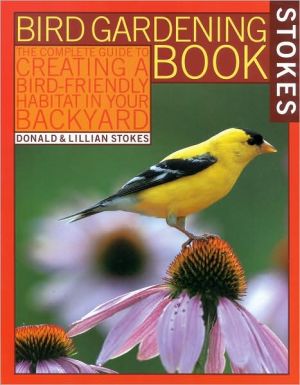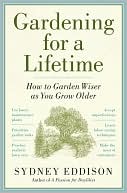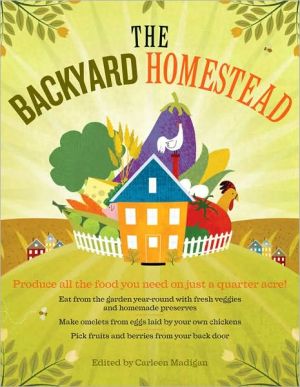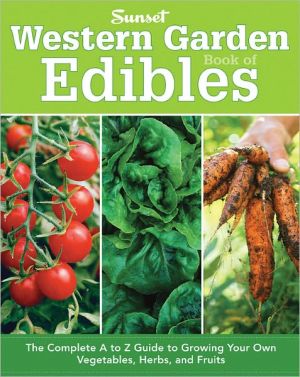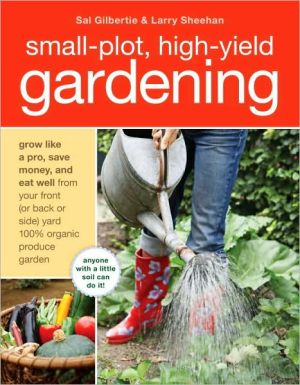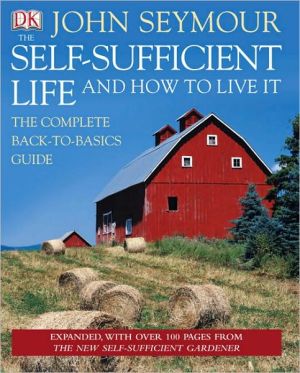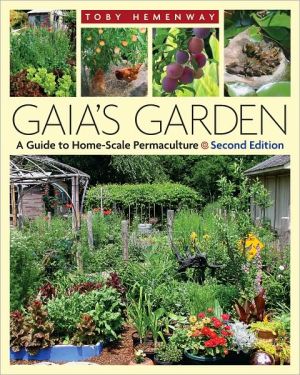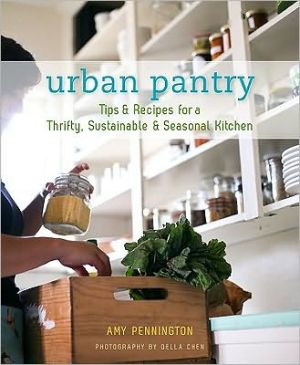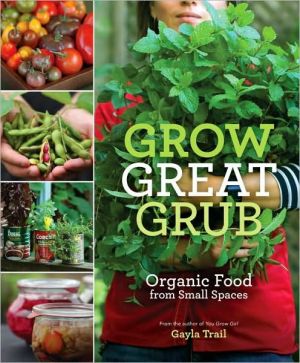Bird Gardening Book: The Complete Guide to Creating a Bird-Friendly Habitat in Your Backyard
An ideal book for anyone who enjoys the added beauty that birds can bring to a garden, "Stokes Bird Gardening Book" covers every aspect of birdwatching and provides charts and garden plans for every region of the country. 300 color illustrations. 20-40 charts. 8 garden plans.
Search in google:
An ideal book for anyone who enjoys the added beauty that birds can bring to a garden, "Stokes Bird Gardening Book" covers every aspect of birdwatching and provides charts and garden plans for every region of the country. 300 color illustrations. 20-40 charts. 8 garden plans. Library Journal This newest addition to the Stokes series offers beginners information on attracting birds to their property. Most of the book gives practical ideas on enhancing one's current yard, such as adding water attractions at different levels and increasing natural and artificial nest cavities. Lists of recommended trees, shrubs, and flowers are included but are not illustrated or as detailed as those in Stephen W. Kress's The Bird Garden (LJ 12/95). A third of the book is devoted to describing 103 bird species typically attracted to backyards and includes a color photograph with a description of habitat, food, and nesting requirementsinformation found in many similar books. Those who are well read on this subject will not find much new here, but the Stokeses are respected authorities with a PBS television show, and this reasonably priced title may be in demand. Recommended for public libraries.Bonnie Poquette, Appleton P.L., WI
Stokes Bird Gardening Book\ \ By Donald Stokes Lillian Stokes \ Back Bay Books\ Copyright © 1998 Donald & Lillian Stokes\ All right reserved.\ ISBN: 0-316-81836-4 \ \ \ \ Chapter One\ The Four Needs of Birds\ A New Way of Thinking\ There are four main things that birds need from their environment: food, water, nesting spots, and shelter. If you offer these four things, you have the best chance of attracting the most birds.\ To know if you have these elements on your property, you need to think from a bird's point of view. What does a bird see as food? What does a bird see as available water? Where do birds nest? And what does a bird consider shelter?\ It is challenging and informative to try to think like another animal. It helps you be more sensitive to the needs of all other living things and is a great eye-opener to the principles of conservation.\ A Key Concept: Diversity\ As we briefly look at the four main needs of birds, we will also be constantly referring to the concept of diversity.\ Nature is built upon a multitude of complex interdependencies. The more your yard can begin to reflect the variety of the natural world within a small area, the better it will support birds and other wildlife. Making a property attractive to birds through diversity will automatically make it attractive to many other types of wildlife, for they also depend upon a diversity of habitats.\ #1 - Food\ Birds need food. But what is food to birds? The answer is many things, including: seeds, fruits, leaves, flowers, nectar, buds, insects, earthworms, numerous invertebrates in the earth, amphibians, reptiles, fish, mammals, and even other birds.\ These foods are of two basic kinds-plants and animals. It is hard to directly affect the amount of animal food on your property, but you can easily add to the plant food and this will, in turn, attract animals.\ We have suggested a variety of plant groups to create diversity, such as grasses, flowers, shrubs, and trees, all of which provide food for birds.\ In our yard we try to add as many different types of plant foods as possible: flowers for nectar; grasses, flowers, and weeds for seeds; shrubs and trees for fruits; and trees for nuts. In addition, of course, we have many bird feeders.\ As you look around your property, try to think like a bird. If you were a chickadee that eats insects and small seeds, where would you go? If you were a pheasant or quail that eats grains on the ground, would you have a place to feed? If you were a mockingbird that eats fruits, would you be able to find food all year? And if you were a sparrow on migration, would you stop here to eat grass and weed seeds in fall?\ By thinking like this you can begin to see your property in a different light-as a large, complex living feeder for birds.\ #2 - Water\ Birds need water for both drinking and bathing. Is there water for birds available on your property? It is not enough that there be water; there needs to be water that birds can safely get to for drinking and shallow areas in the open where they can bathe. Having birdbaths and small pools that birds can visit is a good way to offer water. Create several, for it gives the birds choices, and it is hard to guess ahead of time which situation they will like best.\ Birds also need water to drink all year, so continue to work on having water available all twelve months.\ #3 - Nesting Sites\ Birds need places to build a nest and raise young. As we often say, "If you don't have breeding birds, you won't have feeding birds." In other words, do not just put out feeders; provide places for your birds to breed as well.\ Different species nest in different habitats and in various locations within those habitats. Therefore, you need many diverse nesting opportunities to attract a large number of nesting species.\ For example, Savannah Sparrows and quail nest on the ground among tall grasses; mockingbirds, cardinals, and catbirds nest in shrubs with appropriate branching structure; robins nest on horizontal limbs of trees; orioles suspend their nests from the tips of drooping branches over open areas; titmice need birdhouses or holes in dead trees; Chipping Sparrows need dense evergreens; and Barn Swallows need access to old outbuildings or barns.\ Look around your property for nests in winter (when leaves have fallen) to see what locations birds are already using for nests. And in spring and summer look for nesting birds. All properties can use more birdhouses, and most can use more diverse plantings to encourage breeding birds.\ #4 - Shelter\ Birds need shelter from rain, snow, sun, wind, and predators. By providing a variety of shelter on your property you will attract more birds.\ Although birds often fly around in the rain as if it were not there, during downpours they usually seek some kind of cover. We once watched a Downy Woodpecker cling to the trunk of a tree just under a larger limb throughout a heavy rainstorm. And there are many times we have seen birds during heavy rain pause under the eaves of our hopper-type feeders. Dense evergreens and large broad-leaved shrubs and trees provide birds with some protection from rain.\ Dense evergreens provide good cover for birds during heavy snowfalls, and many species will fly into them and stay there until the storm is past. These evergreen shrubs or trees also keep snow from accumulating on the ground underneath them, enabling birds to look for seeds among the leaf litter. We have large rhododendrons right near our feeders and we sprinkle seed underneath them in winter. The birds use the shrubs continually, feeding on the seed and staying out of the snow.\ Birds also need shelter from the sun, especially in very hot climates. We find that hummingbirds particularly like to sit in cool shade between their visits to our hummingbird feeders and nectar plants. Tall broad-leaved trees are ideal, for they provide dappled shade and let breezes go through as the birds sit on perches within them.\ Strong winds can buffet birds around and cost them more energy. A windbreak or hedgerow that is planted perpendicular to the prevailing wind will attract birds, especially if feeders are placed in their lee. Birds roosting at night also need protection from chilling winds in winter. Large stands of dense evergreens provide this protection and may be used by species that roost in flocks, such as Mourning Doves and crows.\ And finally, birds need protection from predators. They can usually fly away from ground predators, but they need special protection from aerial predators such as Sharp-shinned or Cooper's Hawks that attack in flight. Dense shrubs or evergreens near feeders will give the birds a way to escape the attacks of these birds of prey.\ The Restoration of the American Habitat\ Adding food, water, nesting spots, and shelter to the environment of your property is not something you do just to attract birds; it is much more. As we humans have gradually taken over the natural landscape for farming, roads, development, and housing we have taken away the features of the environment that birds need for their survival.\ We are also dependent on these same features in the environment. But when the environment is taken away, its loss shows up more quickly in the lives of birds, for they have no alternatives. It is just a matter of time before it shows up in our own lives.\ All living things on earth are ultimately dependent on the multitude of complex interdependencies of the natural world. If the birds are doing well, then we are doing well and will continue to do well. If the birds are not doing well, then in the long run, neither will we.\ Enriching your own backyard is a small step that you can take to restore the American habitat, bring back the birds and other animals, and add to the long-term health of the human race in its interdependence with all other living things.\ (Continues...)\ \ \ \ \ Excerpted from Stokes Bird Gardening Book by Donald Stokes Lillian Stokes Copyright © 1998 by Donald & Lillian Stokes . Excerpted by permission.\ All rights reserved. No part of this excerpt may be reproduced or reprinted without permission in writing from the publisher.\ Excerpts are provided by Dial-A-Book Inc. solely for the personal use of visitors to this web site. \ \
\ Library JournalThis newest addition to the Stokes series offers beginners information on attracting birds to their property. Most of the book gives practical ideas on enhancing one's current yard, such as adding water attractions at different levels and increasing natural and artificial nest cavities. Lists of recommended trees, shrubs, and flowers are included but are not illustrated or as detailed as those in Stephen W. Kress's The Bird Garden (LJ 12/95). A third of the book is devoted to describing 103 bird species typically attracted to backyards and includes a color photograph with a description of habitat, food, and nesting requirementsinformation found in many similar books. Those who are well read on this subject will not find much new here, but the Stokeses are respected authorities with a PBS television show, and this reasonably priced title may be in demand. Recommended for public libraries.Bonnie Poquette, Appleton P.L., WI\ \
